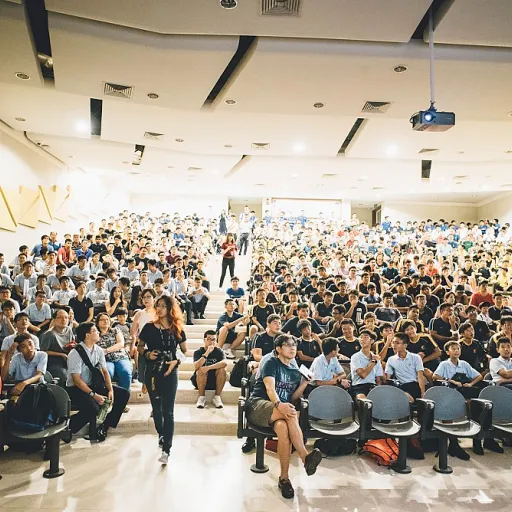
Defining Human Resources and Talent Advisors
Defining the Distinct Roles in Human Capital Management
In today’s organizational landscape, the roles of Human Resources (HR) and Talent Advisors are pivotal in managing and optimizing an organization's human capital. Understanding these distinct roles is crucial for harnessing the potential of employees effectively. Human Resources: Often seen as the backbone of employee relations and resource management, HR encompasses a broad range of functions crucial for the smooth running of any organization. From talent acquisition and recruitment process management to employee development and strategic resource planning, HR professionals ensure that both the organization's and employees' needs are met. This includes tasks such as payroll, benefits administration, regulatory compliance, and maintaining a productive work environment. Talent Advisors: As a relatively new role, Talent Advisors specialize in aligning strategic talent management with business objectives. Their focus is on nurturing high potential talent and maximizing the skills and competencies of potential employees. This role serves as a strategic advisor, guiding recruitment strategy and providing insights into talent acquisition that ensure long-term organizational success. Despite their differences, both HR and Talent Advisors work collaboratively to address skills gaps and enhance employee engagement, a synergy that is essential for sustainable growth. For more insights on crafting strategic roles within an organization, consider exploring our comprehensive guide.Key Differences in Approach
Contrasting HR Strategies and Talent Advisory Approaches
When examining the strategic nuances between traditional human resources roles and the growing sphere of talent advisors, it becomes apparent that while both focus on an organization's people, their methods and objectives often diverge. Human resource professionals tend to emphasize efficient management of an organization's human capital. This includes handling the recruitment process, employee relations, and ensuring compliance with employment laws. Their role is deeply entrenched in maintaining a harmonious work environment and focusing on employee development from an operational standpoint. On the other hand, talent advisors lean towards a more strategic, future-focused mindset. Their approach involves identifying and nurturing high potential employees, crafting talent management strategies, and understanding the long-term needs of the company. These advisors often play a critical role in talent acquisition, aiming to secure top talent that aligns with the company's strategic goals and potential growth trajectories. Both roles are crucial; however, their contributions differ in the way they can enhance organizational strategies. While human resources might deal with immediate personnel issues and paper-free resource management, talent advisors drive toward strategic development and aligning company objectives with the recruitment of high-level talent and skills competencies. The convergence of these roles creates synergies that can propel an organization forward, balancing the immediate needs with strategic talent foresight. Understanding the inherent differences and potential collaboration opportunities enhances an organization's ability to leverage both roles effectively. For more nuanced insights into these roles and their broader impact on business landscapes, especially within academic settings like Colorado Mesa University's business analysis exploration, it is invaluable to dive deeper into specific case studies and research findings.Addressing the Skills Gap
Bridging the Skills Divide in Organizations
Navigating the complexities of the skills gap requires a strategic approach from both human resources professionals and talent advisors. These roles, though distinct in their functions, share a common goal: elevating the organization by maximizing its human capital. The human resources team traditionally focuses on administrative tasks, employee relations, and long-term employee development. They implement strategies for resource management and ensure that employee engagement remains high. However, in confronting the skills gap, a more strategic outlook is necessary. On the other hand, talent advisors bring a more focused approach to talent acquisition, emphasizing understanding the potential for growth and the current skills competencies within the workforce. They are integral in shaping the recruitment process to identify top talent with high potential. To effectively address the skills gap, organizations can adopt an integrative approach that includes:- Strategic Collaboration: By aligning the efforts of resources talent management with talent advisory, organizations can develop comprehensive strategies to identify and nurture potential employees who align with future business needs.
- Continuous Development Programs: Initiatives that focus on the ongoing development of employees ensure they possess the skills required to keep pace with the evolving market. This is crucial for bridging the gap and enhancing organizational competence.
- Resource Management Optimization: Leveraging technology to create paper-free environments can streamline the recruitment process and improve efficiency in identifying and fostering talent.
Impact on Organizational Growth
Influence on Growth Trajectories
In the dynamic landscape of modern organizations, the roles of human resources and talent advisors are pivotal in shaping the growth trajectory of a company. Both roles, while distinct in their functions, contribute significantly to the strategic development of an organization. Understanding how these roles impact organizational growth is crucial for leveraging their full potential.
Strategic Talent Management
Human resources departments traditionally focus on resource management, ensuring that employee relations and administrative tasks are handled efficiently. This paper-free approach to management allows for a streamlined recruitment process, which is essential for maintaining a steady influx of potential employees. On the other hand, talent advisors are more involved in talent management and acquisition, identifying high potential candidates who can drive the company forward. Their strategic role in recruitment and employee development ensures that the organization is not just filling positions but building a team capable of achieving long-term goals.
Enhancing Employee Engagement
Both human resources and talent advisors play a critical role in enhancing employee engagement. Human resources focus on creating a supportive environment where employees feel valued and motivated. This involves understanding employee needs and addressing them through effective resource management. Meanwhile, talent advisors work on aligning employee skills with organizational goals, ensuring that employees are not only engaged but also contributing to the company's strategic objectives.
Driving Organizational Success
The collaboration between human resources and talent advisors is essential for driving organizational success. By working together, these roles ensure that the organization is not only attracting top talent but also retaining and developing them. This synergy is crucial for maintaining a competitive edge in the market and achieving sustainable growth.
Conclusion
In conclusion, the impact of human resources and talent advisors on organizational growth cannot be overstated. Their combined efforts in strategic talent management and employee engagement are key drivers of success. As organizations continue to evolve, the collaboration between these roles will be more important than ever in navigating future trends and challenges.
Collaboration Between Roles
Fostering Synergy Between Human Resources and Talent Advisors
In the dynamic landscape of modern organizations, the collaboration between human resources and talent advisors is crucial for maximizing the potential of both roles. While human resources focus on the broader aspects of employee management and organizational policies, talent advisors bring a strategic edge to recruitment and talent acquisition. Together, they can create a powerful synergy that enhances employee engagement and development.
To achieve this, both roles must align their strategies and share insights. Human resources can provide valuable data on employee relations and organizational needs, while talent advisors can offer expertise in identifying high potential candidates and crafting long-term recruitment strategies. This collaboration ensures that the recruitment process is not only efficient but also aligned with the company’s strategic goals.
Moreover, by working together, these roles can address skills competencies and gaps more effectively. Human resources can implement employee development programs based on insights from talent advisors, ensuring that the organization is equipped with the skills needed for future growth. This partnership is essential for fostering a culture of continuous learning and development within the organization.
In a paper-free environment, leveraging digital tools and platforms can further enhance this collaboration. By sharing resources and insights digitally, human resources and talent advisors can streamline processes and focus on strategic initiatives that drive organizational growth.
Ultimately, the collaboration between human resources and talent advisors is not just about filling roles; it's about building a resilient organization that can adapt to changing market demands and capitalize on opportunities for growth. By understanding each other's roles and working together, they can unlock the full potential of the organization's talent pool.
Future Trends and Challenges
Anticipating Future Challenges and Trends
The future holds numerous challenges and trends for both human resources and talent advisors, demanding their agile adaptation. With the rapid progression of technology, organizations must continuously reassess their talent acquisition and management strategies, positioning themselves to meet tomorrow's workforce demands.- Embracing Digital Transformation: As companies become increasingly digital, the importance of adopting paper-free processes is more evident than ever. This not only enhances efficiency but also aligns with environmental sustainability practices. Organizations must integrate sophisticated talent management software that facilitates seamless recruitment, onboarding, and employee development.
- Leveraging Data Analytics: There is a growing emphasis on data-driven decision-making. Human resources and talent advisors must harness advanced analytics to understand employee engagement and optimize recruitment processes. By understanding roles more intricately through data insights, organizations can better anticipate workforce needs and identify high-potential employees.
- Fostering Strategic Partnerships: Collaboration between human resources and talent advisors is crucial. By working together, they can formulate strategies that cater to both immediate and long-term organizational goals, strengthening their resource management capabilities.
- Navigating Global Talent Pools: The expansion of remote work trends opens opportunities for tapping into global talent. Talent advisory and management must focus on refining recruitment efforts to acquire top talent worldwide while understanding local cultures and markets.
- Adapting to Workforce Diversity: With a heightened focus on inclusivity, organizations are tasked with creating culturally competent environments that embrace diversity. Implementing comprehensive employee relations and engagement strategies is vital to this cause.












